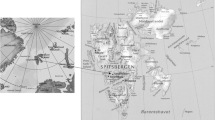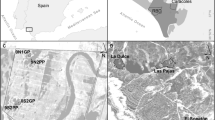Abstract
Restricted mobility and spatial isolation of social units in gregarious subterranean mammals ensure good defence mechanisms against parasites, which in turn allows for a reduction of immunity components. In contrast, a parasite invasion may cause an increased adaptive immune response. Therefore, it can be expected that spatial and temporal distribution of parasites within a population will correlate with the local variability in the host’s immunocompetence. To test this hypothesis, the intra-population variability of a whipworm infestation and the humoral immune response to non-replicated antigens in mole voles (Ellobius talpinus Pall.), social subterranean rodents, was estimated. Whipworm prevalence in mole voles increased from spring to autumn, and this tendency was more pronounced in settlements living in natural meadows compared to settlements in man-made meadows. However, humoral immune response was lowest in animals from natural meadows trapped in autumn. Since whipworm infestation does not directly affect the immunity of mole voles, the reciprocal tendencies in seasonal dynamics and spatial distribution of whipworm abundance and host immunocompetence may be explained by local deterioration of habitat conditions, which increases the probability of an infestation.



Similar content being viewed by others
References
Alexander RD (1974) The evolution of social behaviour. Ann Rev Ecol Systematics 5:325-383
Ar A (1987) Physiological adaptation to underground life in mammals. Comp Physiol Environ Adapt, 8th ESCP Conf Strasbourg 2:208–221
Archer EK, Bennett NC, Faulkes CG, Lutermann H (2015) Digging for answers: contributions of density-and frequency-dependent factors on ectoparasite burden in a social mammal. Oecologia 180:429–438
Barnard CJ, Kulis K, Behnke JM, Bajer A, Gromadzka-Ostrowska J, Stachon M, Sinski E (2003) Local variation in helminth burdens of bank voles (Clethrionomys glareolus) from ecologically similar sites: temporal stability and relationships with hormone concentrations and social behaviour. J Helminthol 77:185–195
Behnke JM, Wakelin D (1973) The survival of Trichuris muris in wild populations of its natural hosts. Parasitology 67:157–164
Blackwell NM, Else KJ (2001) B cells and antibodies are required for resistance to the parasitic gastrointestinal nematode Trichuris muris. Infect Immun 69:3860–3868
Bordes F, Morand S (2009) Coevolution between multiple helminth infestations and basal immune investment in mammals: cumulative effects of polyparasitism? Parasitol Res 106:33–37
Bordes F, Blumstein DT, Morand S (2007) Rodent sociality and parasite diversity. Biol Lett 3:692–694
Bordes F, Blasdell K, Morand S (2015) Transmission ecology of rodent‐borne diseases: new frontiers. Integrat Zool 10:424–435
Bradley JE, Jackson JA (2004) Immunity, immunoregulation and the ecology of trichuriasis and ascariasis. Paras Immun 26:429–441
Caughley G (1977) Analysis of vertebrate populations. John Wiley and Sons, New York
Cote IM, Poulin R (1995) Parasitism and group size in social animals: a meta-analysis. Behav Ecol 6:159–165
Cremer S, Armitage SA, Schmid-Hempel P (2007) Social immunity. Curr Biol 17:693–702
Cunningham AJ (1965) A method of increased sensitivity for detecting single antibody-forming cells. Nature 207:1106–1107
Deter J, Chava Y, Galan M, Berthier K, Salvador AR, Garcia JCC, Charbonnel N (2007a) Linking demography and host dispersal to Trichuris arvicolae distribution in a cyclic vole species. Int J Parasitol 37:813–824
Deter J, Cosson JF, Chaval Y, Charbonnel N, Morand S (2007b) The intestinal nematode Trichuris arvicolae affects the fecundity of its host, the common vole Microtus arvalis. Parasitol Res 101:1161–1164
Evdokimov NG (2001) Population ecology of northern mole vole (Ellobius talpinus Pall). Ekaterinburg Press, Ekaterinburg (In Russian)
Feliu C, Spakulova M, Casanova JC, Renaud F, Morand S, Hugot JP, Santalla F, Durand P (2000) Genetic and morphological heterogeneity in small rodent whipworms in southwestern Europe: characterization of Trichuris muris and description of Trichuris arvicolae n. sp. (Nematoda: Trichuridae). J Parasitol 86:442–449
Frank SA (1996) Models of parasite virulence. Quart Rev Biol 71:37–78
Gardner SL (1991) Phyletic coevolution between subterranean rodents of the genus Ctenomys (Rodentia: Hystricognathi) and nematodes of the genus Paraspidodera (Heterakoidea: Aspidoderidae) in the Neotropics: temporal and evolutionary implications. Zool J Linn Soc 102:169–201
Goüy de Bellocq J, Charbonnel N, Morand S (2008) Coevolutionary relationship between helminth diversity and MHC class II polymorphism in rodents. J Evol Biol 21:1144–1150
Hafner MS, Sudman PD, Villablanca FX, Spradling TA, Demastes JW, Nadler SA (1994) Disparate rates of molecular evolution in cospeciating hosts and parasites. Science 265:1087–1090
Hamilton WD (1987) Kinship, recognition, disease, and intelligence: constraints of social evolution, In: Ito Y, Brown JL, Kikkawa J(eds) Animal Societies: Theories and Facts. Jap Sci Soc Press, Tokyo, pp 81–102
Kundu S, Faulkes CG (2004) Patterns of MHC selection in African mole–rats, family Bathyergidae: the effects of sociality and habitat. Proc R Soc Lond B 271:273–278
Kutsumi H, Miyamoto K, Inaoka T (1989) Susceptibility of the Chinese hamster (Cricetulusgriseus) to parasitic infection (3). Experimental infection with Hymenolepis nana or Trichuris muris to the cortisone treated Chinese hamster. Hokkaido Igaky Zasshi 64:492–499
Lochmiller RL, Deerenberg C (2000) Trade-offs in evolutionary immunology: just what is the cost of immunity? Oikos 88:87–98
Lochmiller RL, Moshkin MP (1999) The adaptive significance or the variability of immuno-competence in populations of small mammals. Contemp Probl Ecol 6:37–58
Lochmiller RL, Vestey MR, Mcmurry ST (1991) Primary immune responses of selected small mammal species to heterologous erythrocytes. Comp Biochem Physiol Part A: Physiol 100:139–143
Loehle C (1995) Social barriers to pathogen transmission in wild animal populations. Ecology 76:326–335
Lutermann H, Bennett NC, Speakman JR, Scantlebury M (2013) Energetic benefits of sociality offset the costs of parasitism in a cooperative mammal. PLoS ONE 8:e57969
Møller AP, Merino S, Brown CR, Robertson RJ (2001) Immune defense and host sociality: a comparative study of swallows and martins. Am Nat 158:136–145
Møller AP, Martin-Vivaldi M, Soler JJ (2004) Parasitism, host immune defense and dispersal. J Evol Biol 17:603–612
Moshkin MP, Dobrotvorsky AK, Mak VV, Panov VV, Dobrotvorskaya EA (1998) Variability of immune response to heterologous erythrocytes during population cycles of red (Clethrionomys rutilus Pallas) and bank (Cl. Glareolus Schreber) voles. Oikos 82:131–138
Moshkin MP, Novikov EA, Petrovski DV (2001) Seasonal changes of thermoregulation in the mole vole Ellobius talpinus. Physiol Biochem Zool 74:869–875
Moshkin M, Novikov E, Petrovski D (2007) Skimping as an adaptive strategy in social fossorial rodents: the mole vole (Ellobius talpinus) as an example. In: Begal S, Burda H, Schleich C (eds) Subterranean Rodents. News from underground. Springer, Berlin Heidelberg, pp 49–60
Moskvitina NS, Kravchenko LB, Mak VV, Dobrotvorsky AK, Panov VV, Andreevskich AV, Moshkin MP (2004) Immunoreactivity of different demographic groups in urban populations of striped field mouse Apodemus agrarius (RODENTIA, MURIDAE)”. Russ Zool J 83:480–485
Naumov NP (1948) Studies of comparative ecology of murid rodents. Issue Acad Sci USSR, Moscow, Leningrad (In Russian)
Nevo E, Beiles A (1992) Selection for class II MHC heterozygosity by parasites in subterranean mole rats. Experientia 48:512–515
Novikov E, Petrovski D, Kolosova I, Steinlechner S, Moshkin M (2004) Interactions between intruders and residents in the mole vole Ellobius talpinus. Acta Zool Sin 50:19–26
Novikov E, Petrovski D, Moshkin M (2007) Features of the population structure of mole lemmings at the North-eastern periphery of the species habitat. Contemp Probl Ecol 4:669–676
Novikov EA, Mak VV, Panov VV, Moshkin MP (2010) A humoral immune response to non-replicated antigens and infection of red voles (Clethrionomys rutilus, RODENTIA, CRICETIDAE) with taiga tick (Ixodes persulcatus, ACARINA, IXODIDAE). Russ Zool J 89:106–114
Novikov E, Kondratyuk E, Petrovski D, Titova T, Zadubrovskaya I, Zadubrovskiy P, Moshkin M (2015) Reproduction, aging and mortality rate in social subterranean mole voles (Ellobius talpinus Pall.). Biogerontology 16:723–732
O’Riain MJ, Jarvis JUM (1997) Colony member recognition and xenophobia in the naked mole-rat. Anim Behav 53:487–498
Ots I, Kerimov A, Ivankina EV, Ilyina TA, Hỡrak P (2001) Immune challenge affects basal metabolic activity in wintering great tits. Proc R Soc London B 268:1175–1181
Packard GC, Boardman TJ (1999) The use of percentages and size-specific indices to normalize physiological data for variation in body size: wasted time, wasted effort? Comp Biochem Physiol 122:37–44
Petrovski DV, Novikov EA, Burns JT, Moshkin MP (2010) Wintertime loss of ultradian and circadian rhythms of body temperature in the subterranean euthermic mole vole, Ellobius talpinus. Chronobiol Int 27:879–887
Ponlet N, Chaisiri K, Claude J, Morand S (2011) Incorporating parasite systematics in comparative analyses of variation in spleen mass and testes sizes of rodents. Parasitology 138:1804–1814
Reed DL, Hafner MS (2002) Phylogenetic analysis of bacterial communities associated with ectoparasitic chewing lice of pocket gophers: a culture-independent approach. Microbial Ecol 44:87–93
Reiczigel J, Rozsa L (2005) Quantitative Parasitology 3.0”, Budapest. Distributed by the authors
Rozsa L, Reiczigel J, Majoros G (2000) Quantifying parasites in samples of hosts. J Parasitol 86:228–232
Saino N, Canova L, Fasola M, Martinelli R (2000) Reproduction and population density affect humoral immunity in bank voles under field experimental conditions. Oecologia 143:936–938
Selby GR, Wakelin D (1975) Suppression of the immune response to Trichuris muris in lactating mice. Parasitology 71:77–85
Sheldon BC, Verhulst S (1996) Ecological immunology: costly parasite defences and trade-offs in evolutionary ecology. Tr Ecol Evol 11:317–321
Skrjabin KI, Shikhobalova NP, Orlov IV (1957) Trichocephalidae and Capillariidae of animals and man and the diseases caused by them. Essentials of Nematodology VI, Israel Prog Sci Transl, Jerusalem
Snoeijs T, Van de Casteele T, Adriaensen F, Matthysen E, Eens M (2004) A strong association between immune responsiveness and natal dispersal in a songbird. Proc R Soc Lond B Biol Sci 271:199–201
Spinks AC, O’Riain MJ, Polakow DA (1998) Intercolonial encounters and xenophobia in the common mole rat, Cryptomys hottentotus (Bathyergidae): the effects of aridity, sex, and reproductive status. Behav Ecol 9:354–359
Thompson JN (1994) The coevolutionary process, University of Chicago Press, Chicago
Weil ZM, Martin LB II, Nelson RJ (2006) Interactions among immune, endocrine, and behavioural response to infection. In: Morand S, Krasnov B, Poulin R (eds) Micromammals and Macroparasites. Springer-Verlag, Tokyo, pp 443–473
Acknowledgments
This study was supported by the Federal Fundamental Scientific Research Programme for 2013–2020 (VI.51.1.6) and by the Russian Foundation for Basal Researches, grants No 00-04-49210, 02-04-49253, 03-04-48768, and 16-04-00888. We thank N. Evdokimov and N. Sineva for their participation in collecting material and in discussing the results. We also thank A. Dobrotvorsky and V. Panov for their support in the organisation of field work.
Author information
Authors and Affiliations
Corresponding author
Electronic supplementary material
Below is the link to the electronic supplementary material.
ESM 1
Summary tables of the GLM results for AFC number, body mass, and spleen mas. The factors which effects are significant are marked by red. (PDF 106 kb)
Rights and permissions
About this article
Cite this article
Novikov, E., Petrovski, D., Mak, V. et al. Variability of whipworm infection and humoral immune response in a wild population of mole voles (Ellobius talpinus Pall.). Parasitol Res 115, 2925–2932 (2016). https://doi.org/10.1007/s00436-016-5042-1
Received:
Accepted:
Published:
Issue Date:
DOI: https://doi.org/10.1007/s00436-016-5042-1




